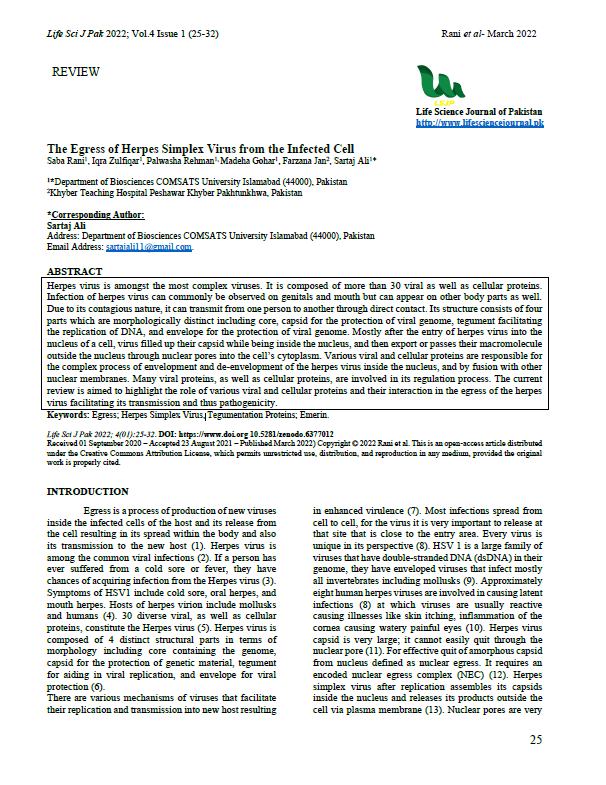The Egress of Herpes Simplex Virus from the Infected Cell
Main Article Content
Abstract
Herpes virus is among the most complex viruses and is composed of more than 30 viral as well as cellular proteins. Infection of herpes virus can commonly be observed on genitals and mouth but can appear on other body parts as well. Due to its contagious nature, it can transmit from one person to another through direct contact. Its structure consists of four parts which are morphologically distinct including core, capsid for the protection of viral genome, tegument facilitating the replication of DNA, and envelope for the protection of viral genome. Mostly after the entry of herpes virus into the nucleus of a cell, virus filled up their capsid while being inside the nucleus, and then export or passes their macromolecule outside the nucleus through nuclear pores into the cell’s cytoplasm. Various viral and cellular proteins are responsible for the complex process of envelopment and de-envelopment of the herpes virus inside the nucleus, and by fusion with other nuclear membranes. Many viral proteins as well as cellular proteins are involved in its regulation process. The current review is aimed to highlight the role of various viral and cellular proteins and their interaction in the egress of the herpes virus facilitating its transmission and thus pathogenicity.
Article Details

This work is licensed under a Creative Commons Attribution 4.0 International License.
 Life Science Journal of Pakistan
Life Science Journal of Pakistan
